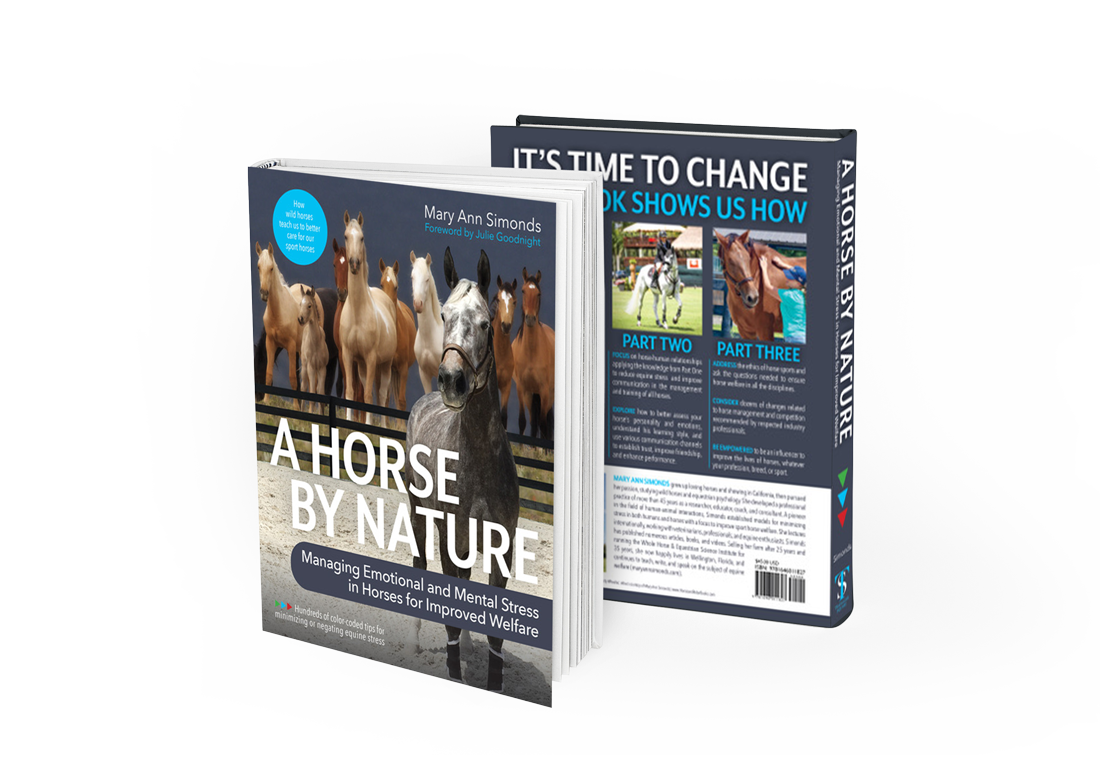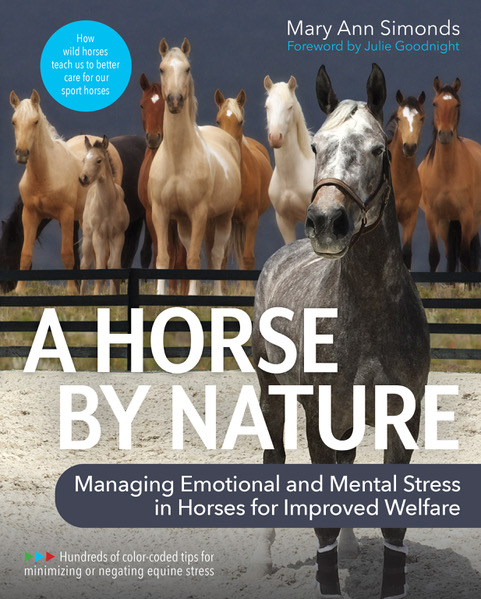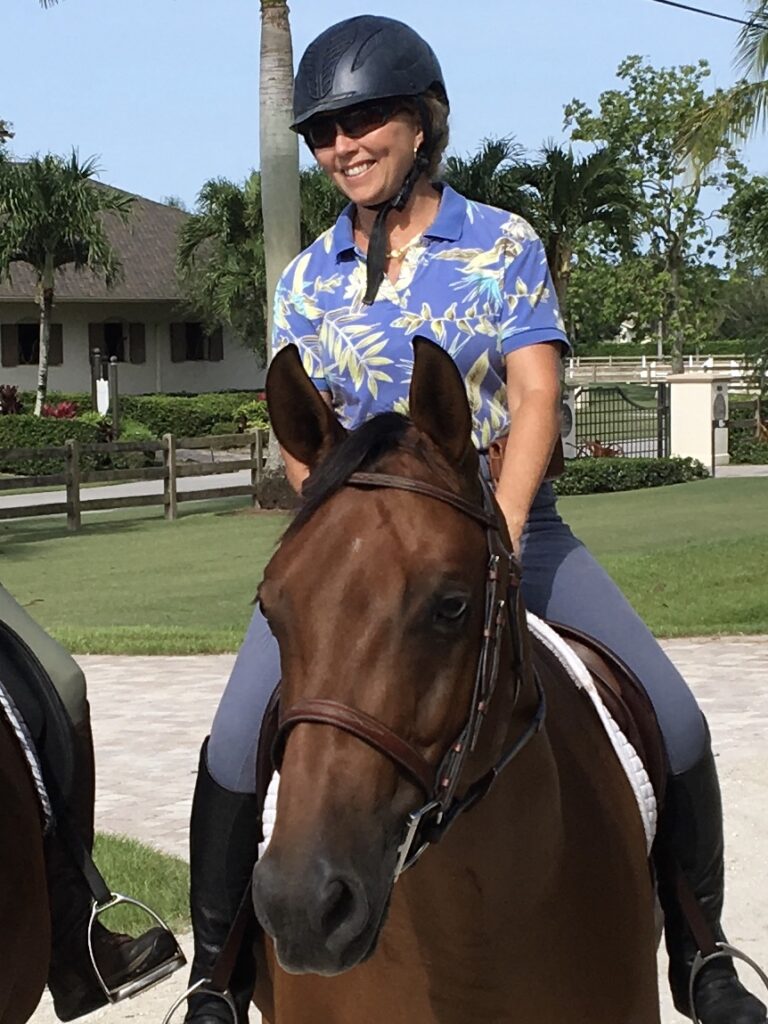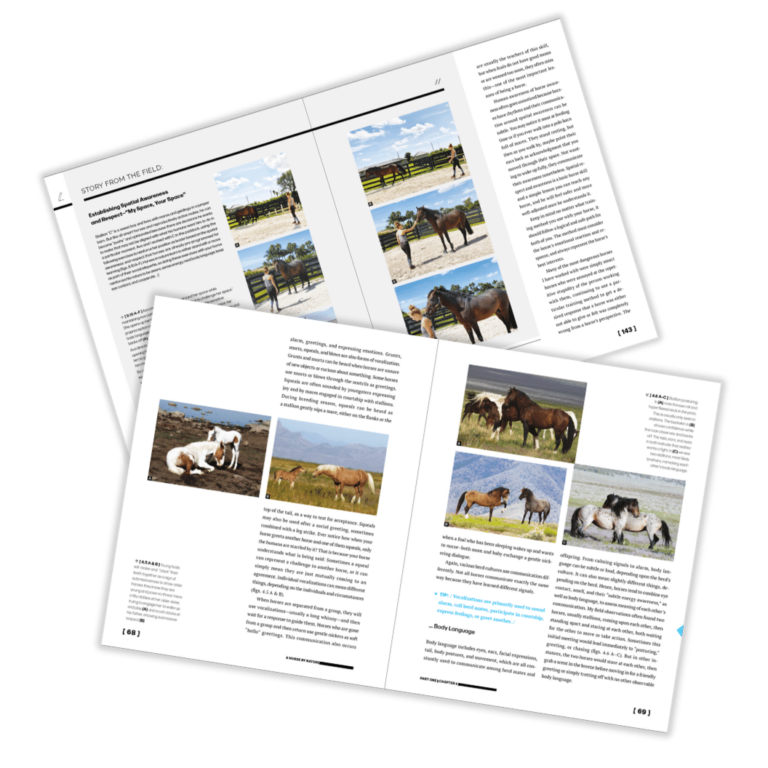A HORSE
BY NATURE
The first complete reference to help equestrians make the changes needed to ensure social license and the ability to ride and compete horses for years to come.

In three parts, each introduced by top researchers and scientists in the equestrian field, readers will:
- LEARN the natural history and social ecology of free-roaming wild horses.
- UNDERSTAND the instincts, learned behaviors, gender differences, social roles, and social bonds that are the driving factors in horse culture.
- DISCOVER how adaptable horses really are, and how that makes them an ideal species to share their social lives with humans.
- FOCUS on horse-human relationships applying the knowledge from Part One to reduce equine stress and improve communication in the management and training of all horses.
- EXPLORE how to better assess the horse’s personality and emotions, understand his learning style, and use various communication channels to establish trust, improve friendship, and enhance performance.
- ADDRESS the ethics of horse sports and ask the questions needed to ensure horse welfare in all the disciplines.
- CONSIDER dozens of changes related to horse management and competition recommended by respected industry professionals.
- BE EMPOWERED to be an influencer to improve the lives of horses, whatever the profession, breed, or sport.


Why I wrote this book
Simply, I wrote this book for every horse lover who wishes to truly know horses. If you are interested in understanding the complex social and emotional lives of horses based on the functional behavior of wild horses and how that applies to any horse, then this book is for you. Working most of my professional career with other professionals from veterinarians and trainers to body workers and human-horse therapists, it became clear that addressing the horse’s emotional and mental health was usually not considered. So often I saw worried horses who internalize their stress with “dead” eyes and ulcers that went unnoticed and yet only took a few simple gestures to gain their social engagement. Or horses afraid to do something like enter a trailer and by just putting the horse’s manure with his friends manure in the trailer would allow the horse to walk in on his own. Simple actions involving “horse-centric” thinking not human-centric.
I realized even well intended people did not understand the importance of soft eye contact, gentle nose bump/smell, a kind voice and a soft scratch to a horse. Observing wild horses and collaborating with other field biologists, I was able to confidently identify many subtle communication channels in horses that people can also use in building strong social bonds. These techniques are not a system or a program, but rather documented observations put into simple ways to assess and communicate with horses based on of how functional horses communicate and work together. Understanding horse priorities for safety, friends and comfort, you will quickly learn how to integrate these techniques relationship with horses regardless of your profession or discipline.
While I have written and lectured for years on “stress management” in horses and developed various stress management products for horses, only recently is research being directed to measure mental stress in horses. We have a long way to go, but I hope this book opens the door and provides a good foundation for establishing best management practices for ensuring beneficial relationships for both species – humans and horses- as we move into the future together with kindness and awareness.
– Mary Ann Simonds
